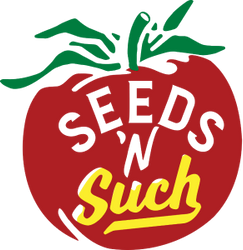Orange Tomatoes Top Deep Reds In Recent Lycopene-Content Research
Until recently, nutritionists and food scientists determined that deep red-colored tomatoes are the best source of the antioxidant lycopene, a natural phytonutrient proven to be effective in maintaining a healthy heart. However, new nutritional research in New Zealand shows that orange-pigmented tomatoes actually contain more lycopene than deep red ones, according to an article by Eating on the Wild Side author Jo Robinson in the current issue of Mother Earth News magazine.
“Tomatoes have made news in recent years because they’re rich in lycopene, a heart-healthy antioxidant that scientists say may also help reduce the risk of stroke and cancer,” says Robinson, “And the redder and riper the tomato, the more lycopene it contains, right? Not so fast. New research shows that orange tomatoes are actually an even better source,” she continues.
But Robinson also notes that new data show, “Orange tomatoes contain a different form of lycopene, known to scientists as ‘cis-lycopene,’ that’s easier for our bodies to absorb. Drinking only one glass of orange tomato juice will give you the same health benefits as drinking eight glasses of red tomato juice. This advantage is maintained when the tomatoes are cooked, too,” she adds.
However, this special cis-lycopene characteristic does not seem to be carried over into yellow or golden-yellow varieties, but rather only those that are of pure-orange pigmentation. “Is the popular ‘Sungold’ cherry tomato rich in cis-lycopene?” Robinson queries, “Nope—like most yellow-fleshed tomatoes, it’s low in the compound. Instead, its yellow-orange color comes from beta-carotene, another important nutrient. A bright-orange hue is the best indicator of a cis-lycopene-rich tomato,” she concludes
Robinson’s article lists some of the top-ranked orange varieties from the Heritage Food Crops Research Trust, a New Zealand group that has been researching the cis-lycopene content of tomatoes: “‘Amish Yellowish Orange Oxheart’—large, oxheart-type tomato with the highest cis-lycopene content; ‘Hawaiian Pineapple’—very large, sweet and aromatic; ‘Moonglow’—globe-shaped beauty with fruits that glow a luminescent orange; ‘Orange Fleshed Purple Smudge’—stunning tangerine-colored fruits with purple shoulders; ‘Orange Roma’—meaty sauce tomato and ‘Orange Strawberry’—heart-shaped fruits with few seeds.”
Robinson concludes, “You’re not likely to find orange tomatoes in your supermarket, but you can scout them out at farmers markets or grow them yourself. This year, you, too, can enjoy one of the latest, most delicious health discoveries.”
Seeds-N-Such currently offers two of the six New Zealand recommended varieties in our ‘Pineapple’ (Indeterminate, 87 days)—“Gigantic bicolor heirloom, weighing up to 2 pounds, with orange and yellow fruits, streaked with red both inside and out. Flesh is meaty, firm and almost seedless, with a rich, fruity, sweet flavor; and ‘Orange Strawberry’ (Indeterminate, 80 days)—“An intensely-colored orange version of ‘German Red Strawberry,’ with fruits weighing 10 ounces up to 1 pound, meaty and seedless, with an acidic, real-tomato flavor.”
While our ’Chef’s Choice Orange Hybrid T’ variety is so new that it was not among those tested, we feel it easily meets the criteria noted in the New Zealand study. “(Indeterminate, 75 days)—Captured recent All-America Selections honors, with bright, glowing orange skin on big, beefsteak-sized, 5-6-inch, 9-12-ounce fruits with old-timey flavor. New hybrid bred from old heirloom ‘Amana Orange’ to retain its superb color and flavor, but to add hybrid earliness, disease resistance and uniformity. Chefs will love its neon orange color, which is retained whether sliced into salads or cooked into sauces. Vigorous, prolific plants have resistance to Tobacco Mosaic Virus, anthracnose, and are crack-free.”
